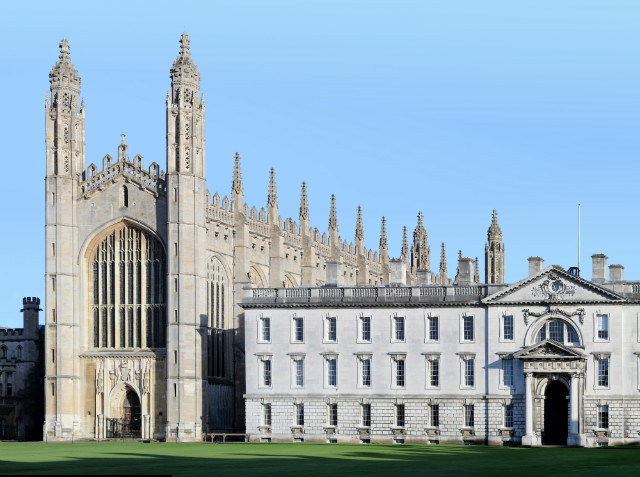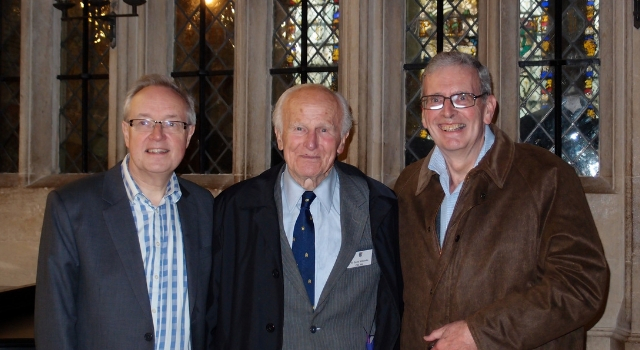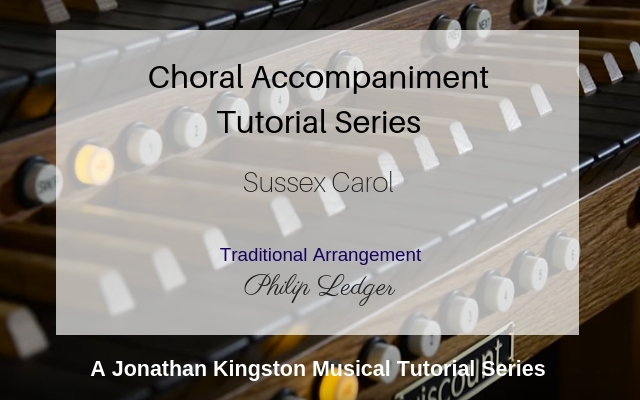Welcome to the sixth and final release in the Choral Organ Accompaniment series. Sussex Carol speaks “Christmas” from its first notes, it being well known as one of the mainstays of the traditional Festival of Nine Lessons and Carols from King’s College, Cambridge on Christmas Eve.
For our 2018 tutorial series we’re concentrating on the organ as a means of choral accompaniment. Church choral music was chosen to illustrate the accompaniment of various parts of the liturgy and to highlight some well-known anthems. The setting for these recordings, St Mary’s, Chalgrove, is a beautiful medieval church stunningly restored in 2015.
You can find out more about the choir, the organist, the church and the other five videos in our introduction to the Choral Organ Accompaniment Series.
Sussex Carol (traditional, arr. Philip Ledger)

The carol’s text, and the tune we now know, were picked up aurally by both of the great English folk song collectors, Cecil Sharp and Ralph Vaughan Williams, during their travels around England early in the twentieth century. Vaughan Williams apparently heard it sung by a Mrs. Verrall near Horsham in Sussex, hence the title, and included it in his well-known Fantasia on Christmas Carols. (Other than the fact RVW picked it up in Sussex, it is not clear that the carol has anything particular to do with Sussex.)
Fascinatingly, you can find details of RVW’s handwritten transcriptions of these in the online Vaughan Williams Memorial Library at https://www.vwml.org/record/RVW2/2/102 and https://www.vwml.org/record/RVW1/2/110 (dated 1904). Mrs. Verrall was clearly a prolific performer of folksongs, as she is also shown as the performer of large number of other songs collected by RVW and George Butterworth in the same archive.
There are at least two popular choral arrangements, the best known probably being those of King’s music directors David Willcocks (d. 2015) (in Carols for Choirs 1) and Philip Ledger (d. 2012). Both of them have lilting six-eight accompaniment patterns, and both of them are in G major. The one we’re demonstrating here is Ledger’s.

Organ Accompaniment for Sussex Carol
In terms of organ accompaniment, as Jonathan Kingston explains in his introduction, it calls for bright and balanced organ tone spread over at least two manuals. In many cases organists will use quint mutations and/or Fifteenth stops to give sparkle to the inter-verse interludes (as Jonathan does here). Clear articulation and well-contoured phrasing helps the music flow with rhythmic ease as well as demonstrating a sense of support to the singers.
Depending on the instrumental resources and boundaries of good taste the fanfare-like figures towards the end may be played on a strident solo reed for a real festive splash and the final pedal note demands the presence of a suitably thrilling pedal reed.
Watch the video of Sussex Carol with our choir and accompanied by our organist Jonathan Kingston below. This is played by Jonathan on a custom built Envoy 23-S, which is a very popular church organ.
I have had a passion for church organs since the tender age of 12. I own and run Viscount Organs with a close attention to the detail that musicians appreciate; and a clear understanding of the benefits of digital technology and keeping to the traditional and emotional elements of organ playing.



